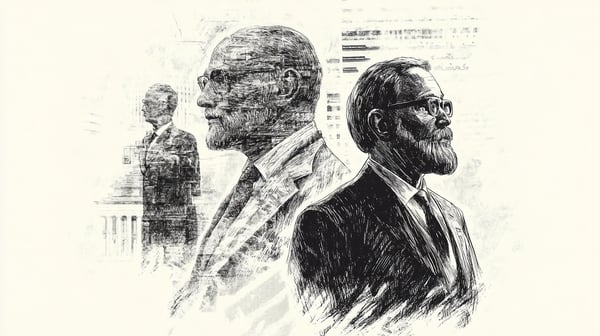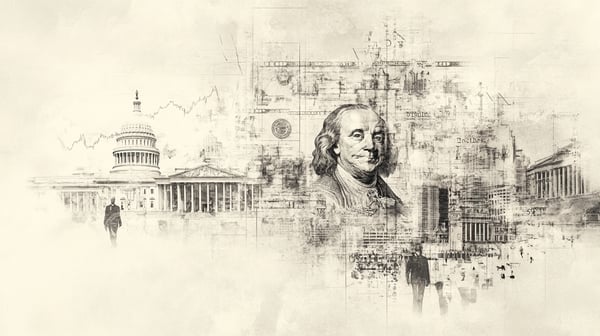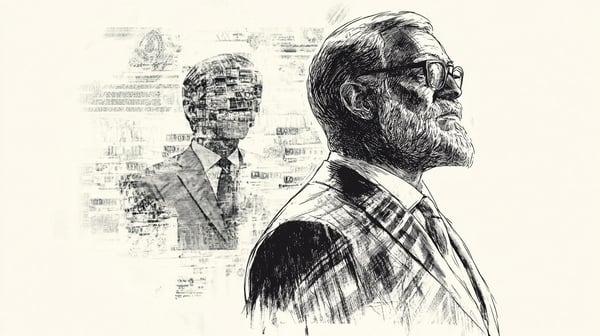Uncertainty Is a Determinant

Predictability of the Majority
As external uncertainty rises, the behaviour of firms and their stakeholders simplifies. The worse they are at decoding the signals coming from the environment, the narrower and more predictable their behavioural repertoire becomes. This fallback to default settings lets the actors of a business ecosystem keep interacting under complex, poorly understood circumstances [1].
Their behaviour is set by formal and informal rules that differ from one context to another. These context-specific rules are social institutions: science and technology, entrepreneurship and the economy, mass media and communications, education, healthcare, the family, law and justice, politics and public governance, the military, and so on. Social institutions are the rules of the game that prescribe behaviour and define the range of deviations society will tolerate [2]. The analogy with a technical drawing is apt: the drawing (the behavioural model) is ideal and common to all embodiments, yet every embodiment differs from the others within the tolerances the drawing allows.*
During the turbulent passage from one technological paradigm [3] to the next, predicting the behaviour of ecosystem participants is easier than in stable, “laminar” periods. Unable to overcome rising uncertainty, companies and their stakeholders fall back on the rules and norms of whichever social institution is experiencing the greatest rate of change.**
In the first phase of a Kondratieff wave, the most volatile, constantly updating contexts are science-technology and entrepreneurship-economy. We are now in the sixth Kondratieff cycle, and in the Western cultural zone [4] its first phase runs roughly from 2015 to 2030. It is to the default settings of the social institutions of technology and entrepreneurship - as they have crystallised up to the present - that ecosystem participants now retreat.
What exactly does this retreat imply?
- Reactivity replaces initiative. Before the turbulent period, firms and stakeholders are more innovative and proactive (and more tolerant of innovation), because such behaviour, within the acceptable institutional bounds, creates new opportunities. With the arrival of uncertainty their actions turn reactive, aimed at risk minimisation and safe moves.
- Standardisation replaces flexibility. Under certainty, ecosystem actors adapt the rules to specific situations, deviating from the prescribed norms within admissible limits. Amid uncertainty they follow the letter of the norms strictly.
- The time horizon contracts. Before uncertainty, the emphasis is on long-term prospects; after, on survival here and now.
Rebellion of the Minority
Not everyone reduces their behaviour to the primitive. A deviant minority always exists. Its rule-breaking conduct is a protest against social institutions that can no longer meet the technological and entrepreneurial challenges of the new age of uncertainty. It is worth recalling Gerd Gigerenzer’s fast and frugal heuristics [5]: I propose that precisely these heuristics become the “ideological” basis of the passionaries who refuse to rely on the old institutional order. The majority see institutional norms as safety and predictability. The minority play a different game. They act on simple rules that minimise cognitive load - no deep processing of complex information - yet allow unconventional moves in unconventional conditions.
Such deviant behaviour signals that the old institutions cannot cope with an accelerating pace of change, while the minority offer simpler, swifter ways to tackle new tasks. These actions often become the first steps toward institutional reform, pointing to the direction in which the institution will evolve.
While the majority revert to the default settings of rules inherited from past Kondratieff cycles in the technological and entrepreneurial arenas, a marginal group, through its protest behaviour, is shaping the future of the social institutions.
The greater the uncertainty, the more primitive and predictable the majority’s behaviour - for them deciphering external signals costs more than obeying tried-and-tested rules. Simultaneously, the rebellion of the minority, cramped by the old frames, sets the cycle of change in motion.
Uncertainty is a determinant. The less intelligible the outside world, the more intelligible what will unfold inside.
* Douglas North writes in [2]: “Institutions are the formal and informal rules that structure interaction among people. They include laws, constitutions, customs, traditions and norms of behaviour. Institutions determine the incentives and constraints for economic, political and social interaction, thereby influencing the behaviour of individuals and groups.”
** Ibid.: “Institutions are the rules of the game in a society, whereas organisations are groups of people brought together to achieve a common purpose within those rules.”
[1] Ronald A. Heiner. (1983). The Origin of Predictable Behavior. The American Economic Review, 73(4), 560–595. https://www.jstor.org/stable/1816559
[2] Douglass C. North. Institutions, Institutional Change and Economic Performance (Political Economy of Institutions and Decision). Cambridge University Press, 1990.
[3] Giovanni Dosi. Technological paradigms and technological trajectories, pp. 78-102 in Christopher Freeman’s Long Waves in the World Economy. Pinter Publishers, 1984.
[4] Christian Welzel. Freedom Rising: Human Empowerment And The Quest For Emancipation. Cambridge University Press, 2014.
[5] Mousavi, S., Gigerenzer, G. Heuristics are Tools for Uncertainty. Homo Oecon 34, 361–379 (2017). https://doi.org/10.1007/s41412-017-0058-z




